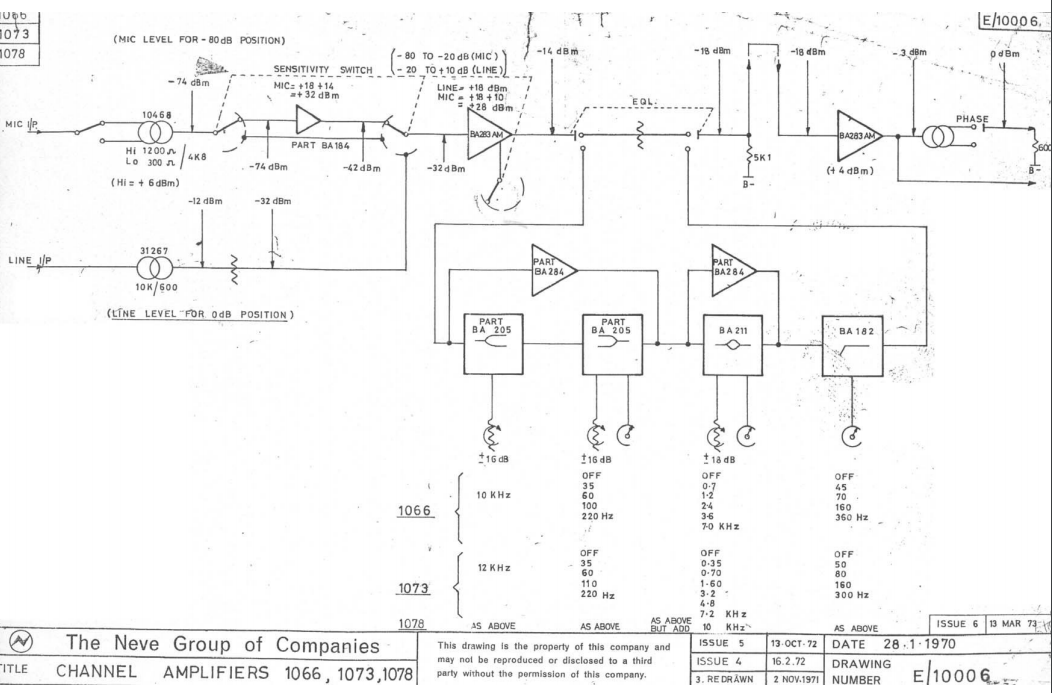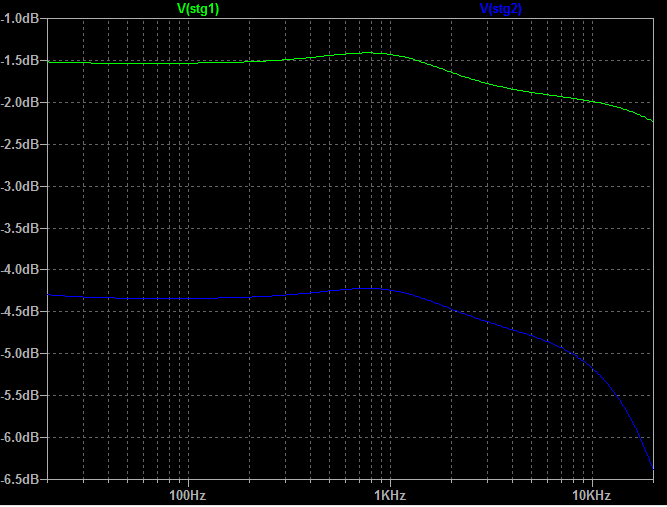Hi guys. I was looking at the 1073 schematics online and chatting with a buddy. There are some pieces of information I’m having trouble reconciling. Maybe y’all can sort me out?
The EQ out send is listed as -18 dBm on the channel amplifier block diagram. There’s also no explicit EQ out point on the detailed schematics. My friend has worked on a Neve desk and says there’s a balanced EQ out and Fader in point on the patchbay. However, he says that if you take a signal from the EQ out patch point and the same signal from the direct out with the fader at unity, the level is the same.
I’m not sure I understand that.
Also, if the EQ out and fader in are balanced, where are these transformers located? They’re not on the schematic. And does the insert send have a line amp? He mentioned once splitting a signal four ways to various gear. So the idea of no line amp or a step up transformer seems doubtful.
Any help?
The EQ out send is listed as -18 dBm on the channel amplifier block diagram. There’s also no explicit EQ out point on the detailed schematics. My friend has worked on a Neve desk and says there’s a balanced EQ out and Fader in point on the patchbay. However, he says that if you take a signal from the EQ out patch point and the same signal from the direct out with the fader at unity, the level is the same.
I’m not sure I understand that.
Also, if the EQ out and fader in are balanced, where are these transformers located? They’re not on the schematic. And does the insert send have a line amp? He mentioned once splitting a signal four ways to various gear. So the idea of no line amp or a step up transformer seems doubtful.
Any help?





